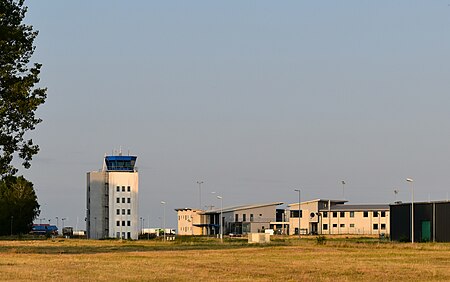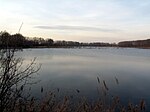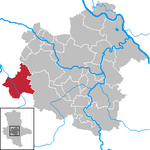Magdeburg–Cochstedt Airport
1957 establishments in East GermanyAirports established in 1957Airports in Saxony-AnhaltFormer Soviet military air bases in East Germany

Magdeburg–Cochstedt Airport (IATA: CSO, ICAO: EDBC) is a minor unscheduled airport located in Cochstedt, Germany. It is located approximately 37 km (23 mi) southwest of Magdeburg, capital of the Bundesland Saxony-Anhalt, and about 190 km (118 miles) west from the center of Berlin. As of 1 September 2016, the airport had been closed by the authorities. In 2019 it was sold as a testing facility to the German Aerospace Center and since 2022, flight operations for small aircraft have started again.
Excerpt from the Wikipedia article Magdeburg–Cochstedt Airport (License: CC BY-SA 3.0, Authors, Images).Magdeburg–Cochstedt Airport
K 1307,
Geographical coordinates (GPS) Address Website External links Nearby Places Show on map
Geographical coordinates (GPS)
| Latitude | Longitude |
|---|---|
| N 51.855833333333 ° | E 11.418333333333 ° |
Address
Magdeburg Cochstedt
K 1307
39444 (Schneidlingen)
Saxony-Anhalt, Germany
Open on Google Maps





